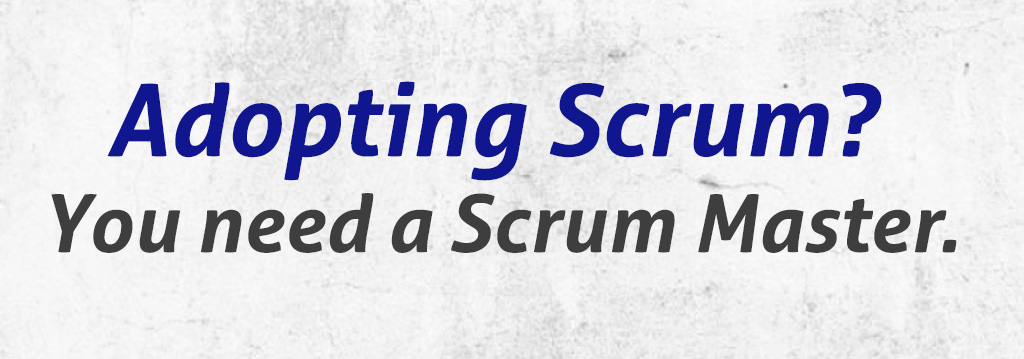
Category : ScrumScrum Master
By Vineet Patni | 8 October 2022
Changes are inevitable with time, whether in our lives or how organizations function. When it comes to an organization, changing how it operates is challenging, as several individuals of various competency levels are involved in it. In the current highly competitive business environment, where time and efficiency matter a lot, it’s of foremost importance that teams should work together to generate value through adaptive solutions for complex problems. And Scrum is the ultimate solution to this challenge.
Why Scrum?
If it’s your first encounter with Scrum, this is for you. Scrum is a lightweight structure with operating rules that allow teams to collaborate easily and achieve goals. Further, it helps them to identify issues, learn through experiences, self-organize while working on issues, and look at their strengths and weaknesses for continual improvement. The following characteristics make Scrum the most wanted approach that both established companies and startups would like to work in:
~ Ability to alter the path according to changing market conditions and priorities
~ Works well for complex projects where many unknowns, ambiguities, and volatility exist
~ Rapid feedback
~ Better coordination between the business and the people developing the solution
~ Works for all types of markets and industries
~ Shorter time to market for early value realization
The Role of the Scrum Master in Spreading the Awareness About Scrum
Adopting Scrum is not a cakewalk. Hence, organizations should hire specialized change leaders (Scrum Masters or Agile Coaches) for this transformation. A Scrum Master ensures everyone in the organization comprehends the Scrum principles, rules, and practices.
Though Scrum is the desire of almost every organization (especially in the software industry), only a few follows anything that matches Scrum’s definition. In one of my recent interactions with several Scrum Masters, I discussed their observation about Scrum adoption. Here are a few conclusions:
~ Be a role model: While nurturing the team’s culture, the Scrum Master should act as a role model, and Scrum elements such as transparency, openness, self-organization, etc., should reflect in their behavior while interacting with the team. Share all information among the entire team. It’ll help the Scrum Master to gain their trust and develop a feeling that all are equal and together in the journey. At the same time, the Scrum Master should understand that s/he is just a facilitator, neither a project manager nor a sole decision maker.
~ Educate the members about Agility and Scrum: At the time of the team formation, educate every team member about the Scrum framework. For this purpose, Scrum Masters can use social agreements or operating agreements that mention the role, the task, and the acceptable behavior. These agreements should be co-created, and the Scrum Master will act as the facilitator here. At this point, try to rely more on human interactions rather than a computerized process.
~ Facilitate timeboxing: Allocating a fixed, maximum unit of time for an activity is called timeboxing. And when it comes to Scrum, timeboxing is a crucial element of all five events. It encourages teams to start getting work done immediately and efficiently. The Scrum Master must ensure that all members follow timeboxing; failing to do so means they are far from Scrum values and are not respectful of others’ time. Using observation power and facilitation skills, a Scrum Master can quickly identify members or teams who do not follow timeboxing.
~ Help the team to remain focused on the goals: It’s the duty of the Scrum Master to cause the removal of impediments that limit the team’s ability to deliver high-quality solutions. As the leader and the coach, the Scrum Master should guide, support, and enable the team to focus on their Sprint Goal. To help remove impediments, the Scrum Master can facilitate conversations and collaboration with other Scrum Teams, departments, and management. Also, the Scrum Master should ensure transparency in the environment where team members feel safe to raise impediments.
~ Widen the spectrum: No doubt, the initial focus of the Scrum Master should be on the Scrum Team. But gradually, s/he can widen their focus and spread the values to other departments by building a solid and trustworthy relationship with people. Thus, a Scrum Master can act as a game changer at the organizational level.
The role of the Scrum Master may look a bit confusing initially. The Scrum Master must understand the work undertaken by the team, coach the team to follow best practices, remove obstacles, facilitate a transparent environment for the team so they can stay focused on the goal, and ultimately lead the team to the path of success.
About The Author:
Vineet Patni is the Founder and Principal Agile Coach at ScaleUp. An avid learner and a passionate facilitator, Vineet has been assisting enterprises and individuals in becoming truly Agile. Please feel free to connect with him at Vineet@ScaleUpConsultants.com .
Disclaimer: The opinions expressed in this post are the author’s own. The author welcomes and respects any difference of opinion.


Leave a Reply